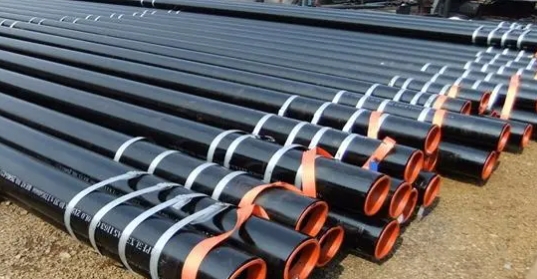
Production Technology and Nitriding Treatment of Seamless Steel Pipes
Seamless steel pipes have hollow cross-sections and are widely used as pipes for conveying fluids. Such as pipelines for transporting oil, gas, coal gas, water and certain solid materials, etc. Steel pipes can be divided into round pipes and special-shaped pipes according to the different cross-sectional shapes. Since the circular area is large under the condition of equal circumference, more fluid can be transported by using a round pipe. In addition, when the circular cross section is subjected to internal or external radial pressure, the force is more uniform. Therefore, most steel pipes are round pipes.
Seamless steel pipes are mainly used as petroleum geological drilling pipes, cracking pipes for petrochemical industry, boiler pipes, bearing pipes, and high-precision structural steel pipes for automobiles, tractors, and aviation.
Overview of the production process of seamless steel pipe
(1) Main production process of cold-rolled (drawn) seamless steel pipe: billet preparation → pickling and lubrication → cold rolling (drawing) → heat treatment → straightening → finishing → inspection
(2) Main production process of hot-rolled seamless steel pipe (main inspection process): tube blank preparation and inspection → tube blank heating → perforation → tube rolling → tube reheating → sizing (reducing) → heat treatment → finished tube straightening → finishing → inspection (non-destructive, physical and chemical, bench inspection) → storage

Nitriding treatment of seamless steel pipe
(1) Nitriding time: After nitriding for a certain period of time, the surface hardness reaches a maximum value, and the hardness decreases slightly after a longer period of time. The higher the nitriding temperature, the shorter the time to reach the maximum value, and the lower the hardness value. The K layer increases with time.
(2) Decomposition rate of ammonia: The decomposition rate of ammonia is the percentage of hydrogen and nitrogen produced by the decomposition of ammonia in the volume of furnace gas. If the decomposition rate is high, the hydrogen in the furnace will cause the nitrogen atoms to be in a stagnant state, that is, the penetration of nitrogen atoms will be prevented. The decomposition rate is related to factors such as furnace pressure, ammonia flow, the surface condition of the seamless steel pipe, and the presence or absence of catalyst. Therefore, the decomposition rate should be controlled within a more appropriate range. Generally speaking, the decomposition rate of ammonia is controlled at around 18% to 45%.
(3) Nitriding temperature: When the nitriding temperature is 500°C, the surface hardness is high. When the temperature exceeds this, the hardness decreases. At the same time, the relationship between nitriding temperature and hardness, nitriding layer, deformation of seamless steel pipe and many other factors is taken into account.


